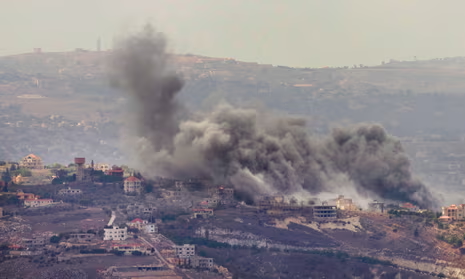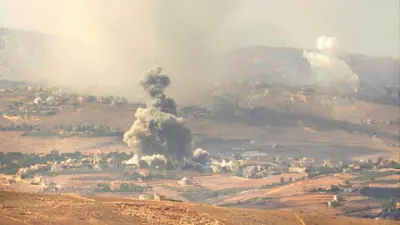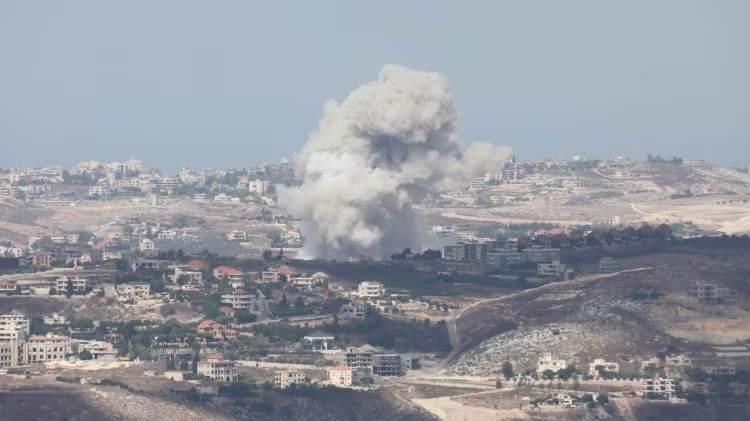Reports of at least 100 people killed in Israeli airstrikes have marked the flare-up in the conflict between Israel and Hezbollah in Lebanon. With this terrible escalation, tens of thousands of Lebanese civilians are fleeing the region in anticipation of further violence and destruction.
The conflict, shaped from old regional tensions, has once again pushed the Middle East toward a broader confrontation. The current situation of the Israel-Hezbollah conflict-the humanitarian consequences on civilians and its potential impact on the greater part of the Middle East region-will be examined in this article.
Israeli Airstrikes Kill More Than 100
Lebanon’s Health Ministry reported at least 100 deaths in various parts of the country after a series of Israeli air strikes hit multiple spots. A mix of these airstrikes, focusing mainly on Hezbollah’s positions, destroyed most of the infrastructure and residential buildings, spreading fear and panic over the civilian population.

The IDF clarified that such air raids were responses to aggressive actions from Hezbollah along Israel’s common border with Lebanon. The series of airstrikes launched by the IDF had the purpose of nullifying Hezbollah’s military structure and bringing any continued attack on Israeli territory to an end. However, collateral damage from all these aerial attacks has led to a humanitarian crisis for those many Lebanese civilians who chanced upon becoming involved.
Humanitarian Effects of the War: Civilian Losses End
As the killing escalates, hundreds of thousands of Lebanese citizens are leaving their homes in search of escape from the massacre situation. Families have been forced to leave their property and livelihoods as violence intensifies. Huge displacement crisis situation. With the vast extent of the damage besides damaging the roads, bridges, and power supply lines, the relief agencies are facing considerable difficulties to access the affected areas.

Many of the people have been left to sleep in shelters, schools, and makeshift camps because the number of such facilities is minimal. However, these soon become overcrowded, with the absence of food, water, and medicines. The international humanitarian agencies have raised concern over the issue of increased numbers of internally displaced persons and demanded urgent action from the world for the people’s well-being and security.
Hezbollah’s Response: Escalation and Retaliatory Strikes
In reaction to the attacks by the Israelis, Hezbollah has threatened to retaliate, which only raises the stakes of the conflict. The clash has since taken on the form of the attacks by Hezbollah through rockets fired into Israeli territory; retaliatory attacks have only worsened the situation, and things are feared to spin out of hand and result in an all-out war.
Hezbollah’s leader, Hassan Nasrallah, has gone on air to publicly condemn the attacks by Israel, warning of catastrophic measures to take if the airstrike continues. He also appealed to the international world to take action in asking Israel to cease its military operations in Lebanon.
Role of the International Community
The international community has stayed focused on the rising conflict with an appeal for an immediate ceasefire to prevent further loss of life. World leaders and organizations around the globe have made appeals, urging restraint from both Israel and Hezbollah as they would seek a chance to engage each other in dialogue to solve the crisis.
Other countries including the United States and European Union have also called for de-escalation, while giving emphasis to civilian life and prevention of spillover beyond Lebanon. However, the lack of a light at the end of the tunnel of this resolution mechanism combined with the inherent intricate nature of the Israel-Hezbollah conflict provides a significant challenge for any constructive intervention by the international community.
A Brief Background History of the Conflict between Israel and Hezbollah
The current escalation is part of a long-running struggle between Israel and the Hezbollah militant group based in Lebanon. This struggle has its roots in the 1980s, while both sides frequently engaged in skirmishes as well as military confrontations. Their most critical collision took place in 2006, when a 34-day war between Israel and Hezbollah caused widespread destruction and killed more than 1,000 people.
Though some ceasefires have been agreed upon, the situation never cooled down entirely because each party had their own attacks and military operations against the other. Still, the current outbreak is a significant show of intense violence since the year 2006, and a newer fear is flung about, giving everyone a growing sense of fear over the prospect of a larger conflict in the region.
Effects to the Region in Large within the Middle East
The stalemate between Israel and Hezbollah, therefore, is continued to pose a high risk for the wider Middle East region already fraught with numerous geopolitical challenges. The conflict is ever feared to spread into neighboring countries and to involve other regional players. That, in turn, might just give a wider war a chance.
There are players in this conflict such as Syria and Iran who are close allies of Hezbollah and may get dragged into the disaster. Israel’s allies such as the United States may be compelled to intervene if things do not normalize. This possibility of a bigger show down has led to more instability in this region and has raised concerns over even a larger humanitarian disaster.
Way to De-escalation: Will Peace Ever Be Possible?
At present, with the war, the way to de-escalation is nowhere in sight because Israel and Hezbollah are willing to do anything for the defense of their territories and interests. Thus, there will not seem to be an end in the war without the world’s watchful eyes on the activity. International involvement in mediation and facilitating dialogue between the two will hold the key to further reduction of violence.
Humanitarian organizations appeal to all parties to abide by international law, regarding civilian lives above all: for the immediate establishment of a ceasefire as to deliver aid to all those affected by conflict. However difficult the path to peace seems to be, all parties must first think of putting back into safety and normalization the civilian lives caught in crossfire.
For Latest News Updates Click Here
